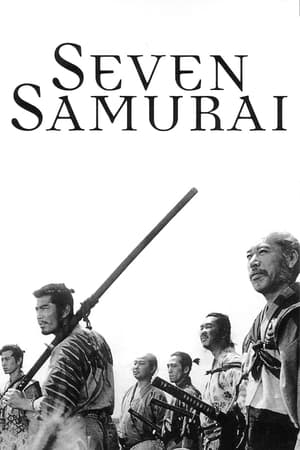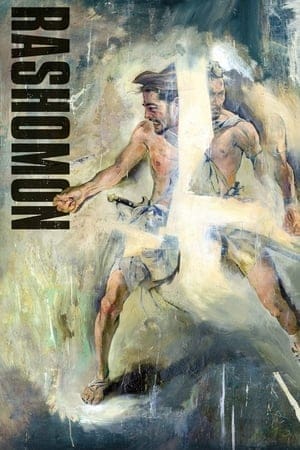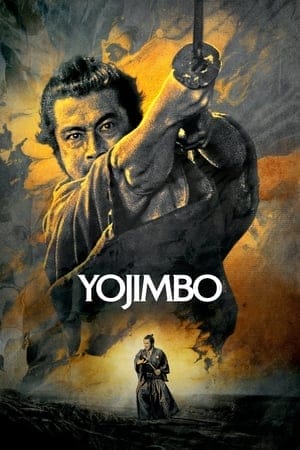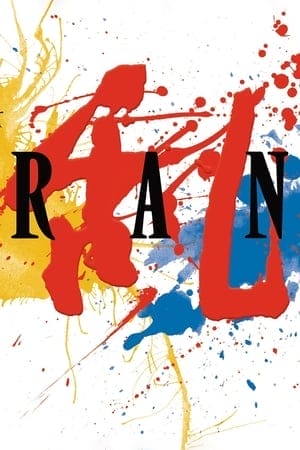If you are a lover of cinema, then you have probably heard of Akira Kurosawa. He is widely considered to be one of the greatest filmmakers of all time, and his influence on the world of filmmaking is undeniable. His iconic films, such as “Seven Samurai”, “The Hidden Fortress”, and “Rashomon” are some of the most celebrated works in film history.

Throughout his career, Kurosawa pushed the boundaries and challenged conventional movie-making techniques. He was one of the first filmmakers to introduce techniques such as rapid cutting, deep focus shots and complex story-telling. His films have inspired generations of filmmakers and have been remade or adapted into Hollywood classics such as “The Magnificent Seven” and “Star Wars: A New Hope”.
In this article we will take a look at Akira Kurosawa’s life and legacy as one of the greatest directors in film history. We’ll explore his iconic works, his unique vision and how he changed Japanese cinema forever.
The Life and Career of Akira Kurosawa
Akira Kurosawa is widely considered the greatest and most influential filmmaker to come out of Japan. He was a trailblazer who helped define Japanese and international cinema with his works.
Kurosawa started as an artist, and then pursued a career as a film director in the 1930s. He worked in the Toho film studio, creating adaptations of classical Japanese stories, like 1948’s The Drunken Angel which is often regarded as his first masterpiece. He went on to gain international recognition with acclaimed films such as Rashomon (1950), Seven Samurai (1954), Throne of Blood (1957) and Yojimbo (1961).
His career was linked to one of the most iconic actors of all time, Toshiro Mifune, who appeared in many of Kurosawa’s films. Together, they created some of the most awe-inspiring scenes ever put to screen including the rain in Rashomon and the snowstorm-filled finale in Seven Samurai.
Kurosawa’s final film was Ran (1985); yet another classic he co-wrote that won him an Academy Award for Best Costume Design in 1986. His legacy continues today through filmmakers like Martin Scorsese who pay homage to him through their own works.
Masterpieces That Shaped the Genre
Akira Kurosawa was a master of the cinematic arts, creating iconic movies that are still influential today. From his debut film, Sanshiro Sugata’ in 1943, to his last filmMadadayo’ in 1993, he crafted dozens of fantastic works. The sheer breadth of his accomplishments makes it difficult to narrow them down, but here are some of the most iconic pieces that shaped Japanese cinema.
- Rashomon (1950): A groundbreaking film about a rape and murder mystery in which four perspectives on the same event are shown. It was controversial when it released and won an Academy Award for Best Foreign Language Film in 1951.
- Seven Samurai (1954): A band of seven masterless samurai protect a village from bandits as part of their path to redemption as warriors. This movie is widely considered one of the greatest films ever made and had two remakes: The Magnificent Seven (1960) and The Seven Samurai (2004).
- Yojimbo (1961): A nameless ronin (masterless samurai) finds himself swept into a town warring between two gangs. This film inspired Sergio Leone’s iconic spaghetti western A Fistful Of Dollars in 1964.
These three masterpieces remain Kurosawa’s most beloved works and showcases the techniques that would become staples in Japanese cinema going forward: long takes, use of natural light and movement towards realism within a traditional story structure.

Kurosawa’s Unique Style of Directing
Akira Kurosawa is widely regarded as one of the greatest film directors of all time. His unique style of directing marked a true breakthrough in the way cinematic storytelling was approached.
Kurosawa’s style was characterized by its striking visual expression, much like the traditional Japanese arts of painting and woodblock printing. He favored long shots over close-ups, often using multiple cameras for simultaneous coverage, and bold camera movements to convey powerful emotions. He also shaped the editing process to finetune the emotional impact during each scene.
In many of his films, Kurosawa combined elements from multiple types of stories—from folklore to Shakespearean drama. Moreover, his movies often included references to classical painting and sculpture, with themes drawn from Japanese mythology and poetry.
Kurosawa pushed boundaries to create lasting works that would influence generations of filmmakers around the world, not only in Japan but in the Western hemisphere as well. From Sergio Leone’s classic spaghetti westerns to Steven Spielberg’s science fiction epics—Akira Kurosawa is widely credited as a major inspiration behind some of Hollywood’s most iconic films!
The Cinematic Influences of Akira Kurosawa

Akira Kurosawa was highly influential in the world of cinema, as his films often showcased a unique blend of Eastern and Western sensibilities. He was credited with introducing countless directorial techniques, both in Japan and beyond.
Innovative Techniques
Kurosawa’s innovative cinematic techniques included elements such as:
- Long takes: The average length of a shot in his movies was longer than those in most other Japanese films of the era.
- Unconventional camera angles: Kurosawa often employed unusual camera angles, such as low-angle shots, which were uncommon for the time.
- Flashbacks: He also pioneered the use of flashbacks, as seen in his masterpiece Seven Samurai (1954).
- Scene transitions: Kurosawa also developed a number of individual scene transitions, many of which were copied by other filmmakers over the next several decades.
These techniques allowed for greater emotional depth and intensity in his films, which ultimately set him apart from other directors of his era and gained him international acclaim.

Impact of Kurosawa’s Films on Modern Cinema
In addition to his iconic films, Akira Kurosawa’s influence on Japanese cinema and its international audience is undeniable. His work has been referenced, studied and praised by filmmakers around the world.
Kurosawa’s focus on realism and his masterful use of widescreen cinematography have been a major influence on narrative storytelling, inspiring directors such as Steven Spielberg, Martin Scorsese, George Lucas, Francis Ford Coppola and Quentin Tarantino.
His style of film-making can be seen in the sweeping wide shots used in grand battle scenes, or when following characters through large outdoor landscapes. A unique mixture of Eastern culture with Western storytelling techniques has made his work both groundbreaking and timeless.
Even outside of tradition genres like epic dramas or samurai films, Kurosawa’s influence can be felt in popular films today. He has had an impact on everything from science fiction to horror to romance films, making him a true giant of the international cinema scene.
Essential Viewing From the Director
For those looking to experience the best of Akira Kurosawa’s work, there are a few essential films you should take the time to watch. From samurai classics like “Seven Samurai” and “Yojimbo” to incredible post-war dramas like “Ikiru” and “High and Low”, these works are guaranteed to provide an unparalleled cinematic experience.
Seven Samurai (1954)
Considered by many to be Kurosawa’s magnum opus, “Seven Samurai” is a classic adventure about a group of seven samurai who band together to protect a small village from a ruthless bandit gang. It is an absolute masterpiece in terms of plotting, pacing, characterization and action scenes.
Yojimbo (1961)
A lighthearted take on the action-adventure genre, this film follows a wandering samurai as he attempts to rid an oppressive town of its corrupt leaders. With its witty dialog and tongue-in-cheek humor, it is considered by many to be one of Kurosawa’s greatest works.
Ikiru (1952)
Kurosawa demonstrated his mastery of drama with this affecting story about a dying bureaucrat who finally finds purpose in life. Themes of mortality and redemption make this film an essential viewing for fans of Japanese cinema.
High and Low (1963)
Adapted from Ed McBain’s novel King’s Ransom, this intense crime drama follows a wealthy businessman as he attempts to find his kidnapped son. It has thrilling suspense sequences as well as thoughtful meditations on morality and redemption, making it one of Kurosawa’s most beloved films.
Akira Kurosawa is a cinematic icon who has earned the title ‘King of Japanese Cinema’. He was a master at creating powerful stories that conveyed essential truths about humanity and the nature of life. His work continues to be celebrated and admired by film-lovers around the world. His legacy includes all of his timeless films, which have captivated audiences, inspired generations of filmmakers, and will continue to do so for years to come. Kurosawa’s films have been recognized as classics and have influenced some of the greatest filmmakers of all time. He was, and still is, a true pioneer of Japanese cinema and will always be remembered as one of the greatest filmmakers of all time.
Quotes
“People today have forgotten they’re really just a part of nature. Yet, they destroy the nature on which our lives depend. They always think they can make something better. Especially scientists. They may be smart, but most don’t understand the heart of nature. They only invent things that, in the end, make people unhappy. Yet they’re so proud of their inventions. What’s worse, most people are, too. They view them as if they were miracles. They worship them. They don’t know it, but they’re losing nature. They don’t see that they’re going to perish. The most important things for human beings are clean air and clean water.”
Akira Kurosawa
“No matter where I go in the world, although I can’t speak any foreign language, I don’t feel out of place. I think of earth as my home. If everyone thought this way, people might notice just how foolish international friction is and they would put an end to it.”
Akira Kurosawa, Something Like an Autobiography


